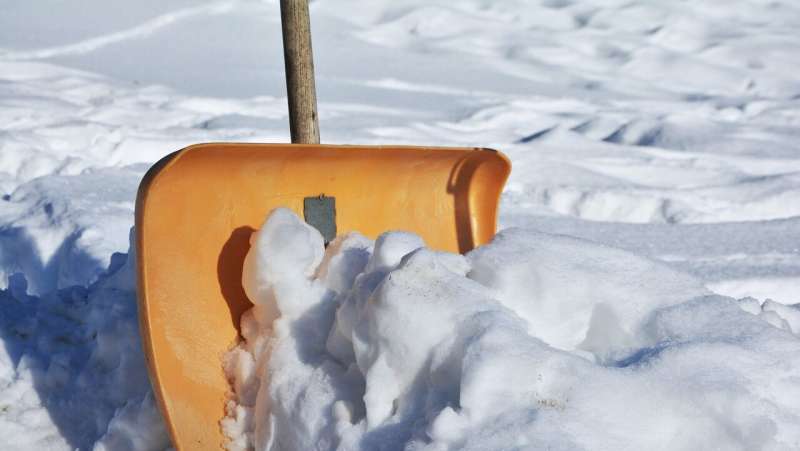This article has been reviewed according to Science X's editorial process and policies. Editors have highlighted the following attributes while ensuring the content's credibility:
fact-checked
trusted source
proofread
What math tells us about social dilemmas

Human coexistence depends on cooperation. Individuals have different motivations and reasons to collaborate, resulting in social dilemmas, such as the well-known prisoner's dilemma. Scientists from the Chatterjee group at the Institute of Science and Technology Austria (ISTA) now present a new mathematical principle that helps to understand the cooperation of individuals with different characteristics. The results, published in PNAS, can be applied to economics or behavioral studies.
A group of neighbors shares a driveway. Following a heavy snowstorm, the entire driveway is covered in snow, requiring clearance for daily activities. The neighbors have to collaborate. If they all put on their down jackets, grab their snow shovels, and start digging, the road will be free in a very short amount of time. If only one or a few of them take the initiative, the task becomes more time-consuming and labor-intensive. Assuming nobody does it, the driveway will stay covered in snow. How can the neighbors overcome this dilemma and cooperate in their shared interests?
Scientists in the Chatterjee group at the Institute of Science and Technology Austria (ISTA) deal with cooperative questions like that on a regular basis. They use game theory to lay the mathematical foundation for decision-making in such social dilemmas.
The group's latest publication delves into the interactions between different types of individuals in a public goods game. Their new model, published in PNAS, explores how resources should be allocated for the best overall well-being and how cooperation can be maintained.
The game of public goods
For decades, the public goods game has been a proven method to model social dilemmas. In this setting, participants decide how much of their own resources they wish to contribute for the benefit of the entire group. Most existing studies considered homogeneous individuals, assuming that they do not differ in their motivations and other characteristics.
"In the real world, that's not always the case," says Krishnendu Chatterjee. To account for this, Valentin Hübner, a Ph.D. student, Christian Hilbe, and Maria Kleshina, both former members of the Chatterjee group, started modeling settings with diverse individuals.
A recent analysis of social dilemmas among unequals, published in 2019, marked the foundation for their work, which now presents a more general model, even allowing multi-player interaction.
"The public good in our game can be anything, such as environmental protection or combating climate change, to which everybody can contribute," Hübner explains. The players have different levels of skills. In public goods games, skills typically refer to productivity.
"It's the ability to contribute to a particular task," Hübner continues. Resources, technically called endowment or wealth, on the other hand, refer to the actual things that participants contribute to the common good.
In the snowy driveway scenario, the neighbors vary significantly in their available resources and in their abilities to use them. Solving the problem requires them to cooperate. But what role does their inequality play in such a dilemma?
The two sides of inequality
Hübner's new model provides answers to this question. Intuitively, it proposes that for diverse individuals to sustain cooperation, a more equal distribution of resources is necessary. Surprisingly, more equality does not lead to maximum general welfare. To reach this, the resources should be allocated to more skilled individuals, resulting in a slightly uneven distribution.
"Efficiency benefits from unequal endowment, while robustness always benefits from equal endowment," says Hübner. Put simply, for accomplishing a task, resources should be distributed almost evenly. Yet, if efficiency is the goal, resources should be in the hands of those more willing to participate—but only to a certain extent.
What is more important—cooperation efficiency or stability? The scientists' further simulations of learning processes suggest that individuals balance the trade-off between these two things. Whether this is also the case in the real world remains to be seen. Numerous interpersonal nuances also contribute to these dynamics, including aspects like reciprocity, morality, and ethical issues, among others.
Hübner's model solely focuses on cooperation from a mathematical standpoint. Yet, due to its generality, it can be applied to any social dilemma with diverse individuals, like climate change, for instance. Testing the model in the real world and applying it to society are very interesting experimental directions.
"I'm quite sure that there will be behavioral experiments benefiting from our work in the future," says Chatterjee. The study could potentially also be interesting for economics, where the new model's principles can help to better inform economic systems and policy recommendations.
More information: Efficiency and resilience of cooperation in asymmetric social dilemmas, Proceedings of the National Academy of Sciences (2024). DOI: 10.1073/pnas.2315558121. doi.org/10.1073/pnas.2315558121
Provided by Institute of Science and Technology Austria



















